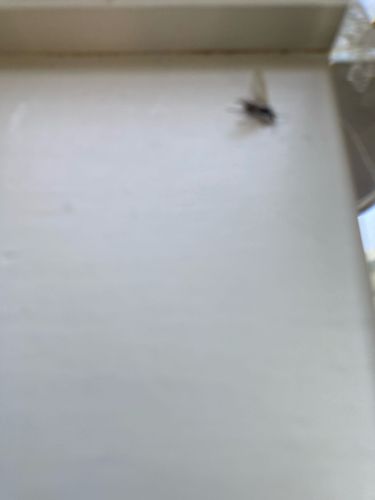House Fly
Scientific Name: Musca domestica
Order & Family: Order: Diptera, Family: Muscidae
Size: 6-7 mm (0.2-0.3 inches) in length, with a wingspan of 13-15 mm (0.5-0.6 inches)

Natural Habitat
House flies are ubiquitous and can be found almost anywhere humans and animals reside. They are common in residential areas, farms, landfills, and any place with accessible food waste or decaying organic matter. Indoors, they are often found near kitchens, trash cans, and windows.
Diet & Feeding
Adult house flies feed on a wide variety of liquid or semi-liquid substances, often regurgitating solid food to liquefy it before consumption. Their diet includes decaying organic matter, human and animal waste, spilled food, and sweet substances. Maggots feed on the decaying material where they hatch.
Behavior Patterns
Flies are typically very active during the day, especially in warmer weather. They are known for their rapid and agile flight, constantly moving between surfaces. They are attracted to food sources and decaying matter for feeding and reproduction. Females lay eggs in moist, decaying organic material, which hatch into maggots that feed on the surrounding environment before pupating into adult flies.
Risks & Benefits
Risks: House flies are significant vectors of disease, carrying and transmitting over 100 different pathogens, including bacteria (e.g., Salmonella, E. coli), viruses, and parasites. They can transfer these pathogens from contaminated surfaces (like feces) to human food and surfaces simply by landing on them. Benefits: In certain ecosystems, house flies and their larvae (maggots) play a role in decomposition, breaking down organic waste. Maggots are also used in forensic entomology to estimate time of death.
Identified on: 8/15/2025